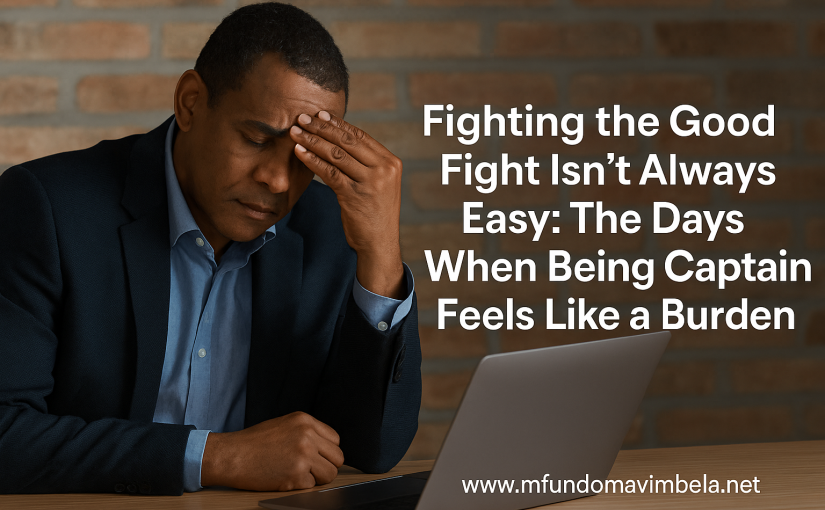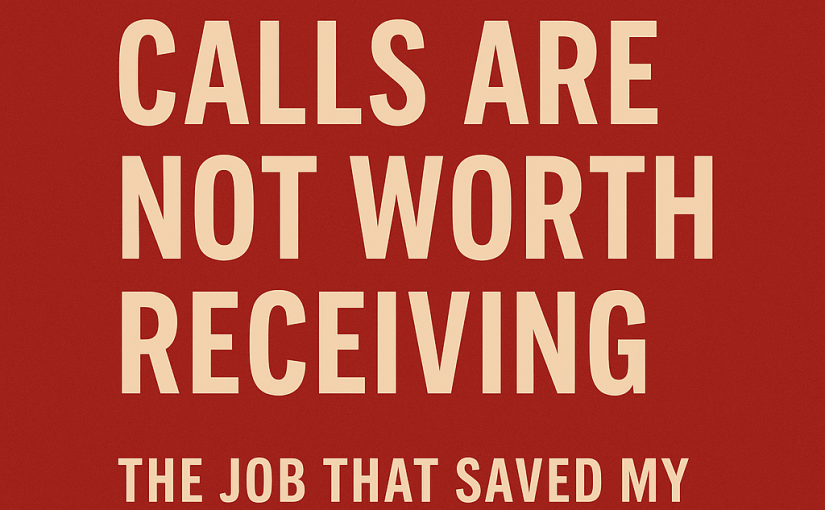Even those who choose the entrepreneurial path are allowed to question it sometimes.
There are days in business when you see the iceberg coming long before impact. You know it’s there, you know it could sink everything you’ve built, but you’re not sure if you can steer away in time.
Today is one of those days for me.
There’s a financial obligation looming that I’m not sure I can meet. The kind that keeps you awake at 3 AM running calculations that don’t add up no matter how you arrange the numbers. The kind that makes you wonder if this time, you’ve finally reached the limit of what willpower and creativity can solve.
And you know what I’m doing about it? I’m writing this article, checking emails, and pretending the ship isn’t heading toward the rocks.
Do you blame me?
The Weight of Always Being Strong
People expect entrepreneurs to be perpetually optimistic, constantly motivated, always ready with another solution. We’re supposed to be the captains who never doubt the journey, never question the destination, never wish we could just be passengers for a while.
But here’s what I need to say today: sometimes I get tired of being the captain.
Sometimes I want to be the client who gets waited on instead of the business owner who does the waiting. Sometimes I want someone else to worry about cash flow while I focus on the work I actually love. Sometimes I want to clock out at 5 PM and let someone else handle the 3 AM anxiety about whether we’ll make payroll.
Is that too much to ask? Am I being unreasonable?
The Complexity of Loving What Challenges You
I know this is the life I chose. I know I wouldn’t trade it for anything, even on days like today. But just because something makes you happy doesn’t mean you’re not allowed to get frustrated when it’s not working the way you planned.
I love my family more than anything, but they drive me crazy sometimes. I love building Yati Group, but there are days when it feels like it’s trying to kill me. I love the freedom of entrepreneurship, but I hate the isolation of being the person everyone depends on for answers.
This isn’t contradiction—it’s complexity. You can be grateful for something and still be exhausted by it. You can believe in your path and still question whether you’re strong enough to walk it some days.
The Myth of Constant Encouragement
I spend a lot of time encouraging other entrepreneurs, sharing insights about building businesses and pushing through challenges. Today, I’m not feeling particularly encouraging. Today, I’m feeling human.
I make mistakes regularly. I get tired more often than I admit. I fail at things I should be good at by now. Some days, the gap between where I am and where I want to be feels insurmountable.
Are you surprised I’m not my usual encouraging self today? Did you think entrepreneurs are immune to doubt, frustration, and fear?
We’re not. We just don’t talk about it publicly very often because we think it makes us look weak or incompetent. But maybe that’s the problem.
The Pressure of the Entrepreneurial Image
There’s this myth that successful business owners have it all figured out, that we’ve moved beyond the struggles that plague “normal” people. That we’ve transcended worry about money, stress about the future, or frustration with setbacks.
The truth is messier. The truth is that building something meaningful is hard every single day, not just in the beginning. The problems get more complex, the stakes get higher, and the pressure to have all the answers increases with every success.
Sometimes the hardest part isn’t solving the business problems—it’s maintaining the facade that you’re always confident about your ability to solve them.
What Nobody Tells You About Fighting the Good Fight
When you choose entrepreneurship, people warn you about the financial risks, the long hours, the uncertainty. What they don’t tell you about is the emotional toll of being responsible for everything and everyone, all the time.
They don’t tell you about the guilt of disappointing clients when things go wrong. The weight of knowing that your decisions affect not just your livelihood, but your employees’ families. The isolation of being the person who can’t show weakness because everyone is counting on your strength.
They don’t tell you that some days, fighting the good fight feels less like heroism and more like stubborn refusal to admit defeat.
The Permission to Be Human
Today, I’m giving myself permission to be frustrated with the thing I love most. Permission to acknowledge that building a business is exhausting in ways that have nothing to do with work hours. Permission to admit that sometimes I don’t have the answers, and that scares me.
I’m giving myself permission to write about doubt instead of certainty, about struggle instead of success, about the days when entrepreneurship feels like a burden instead of a blessing.
And I’m giving you permission to feel the same way about whatever you’re building.
Why Honesty Matters More Than Inspiration
I could have written an inspiring piece about perseverance and positive thinking. I could have shared strategies for overcoming obstacles and maintaining motivation. Those articles have their place, and I’ll write them again.
But today, I think honesty serves better than inspiration.
Because when you’re facing your own iceberg, you don’t need someone telling you to think positive thoughts. You need to know that even people who’ve been doing this for years still face days when the problems feel bigger than the solutions.
You need to know that questioning your path doesn’t mean you’re on the wrong one. That feeling overwhelmed doesn’t make you weak. That wanting to be the passenger instead of the captain sometimes doesn’t mean you should give up the wheel.
The Strength in Admitting Struggle
There’s something powerful about acknowledging struggle without trying to immediately fix it or find the lesson in it. Sometimes things are just hard, and that hardness doesn’t need to be transformed into wisdom or motivation.
Sometimes it’s enough to say: this is difficult, I’m tired, and I don’t have all the answers right now.
That acknowledgment doesn’t make you a bad entrepreneur. It makes you a human one.
Tomorrow Will Be Different
I’ll wake up tomorrow and probably feel differently about these challenges. I’ll find new energy for problem-solving, remember why I chose this path, and get back to building something meaningful.
But today, I’m allowing myself to feel the weight of being captain. Today, I’m admitting that fighting the good fight isn’t always easy.
And somehow, that admission feels more honest than any inspirational message I could offer.
The Real Encouragement
So here’s my encouragement today: you’re allowed to have days when your calling feels like a burden. You’re allowed to question your choices without abandoning them. You’re allowed to be tired of being strong.
Those feelings don’t disqualify you from entrepreneurship. They qualify you as human.
The fight is still good, even when it doesn’t feel easy. Maybe especially then.
Be encouraged—not because everything is perfect, but because perfect was never the point. Building something meaningful was always going to be messy, difficult, and occasionally overwhelming.
That’s not a flaw in the system. That’s the system working exactly as designed.
And you’re exactly where you need to be, even when—especially when—it doesn’t feel that way.



